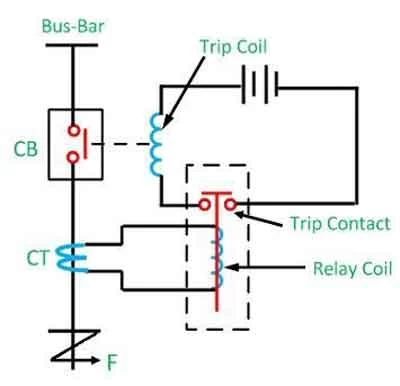Accuracy vs. Speed in Protective Relay Settings

Protective relays are crucial components in electrical protection systems, tasked with detecting faults and initiating actions to isolate problematic sections of the network. A critical aspect of protective relay operation is the balance between accuracy and speed, two factors that can sometimes be at odds.
Protective relays play a critical role in safeguarding electrical power systems. They continuously monitor system parameters like current, voltage, and impedance, and upon detecting abnormalities indicative of a fault, they initiate a trip signal to isolate the faulty section. However, achieving optimal performance in protective relay settings involves a crucial trade-off: accuracy versus speed.
The Trade-off between Accuracy and Speed
Understanding the Dynamics
Accuracy in protective relays refers to their ability to detect and respond to actual electrical faults accurately, while speed relates to the promptness of this response. High accuracy ensures that relays correctly identify and act on genuine faults, minimizing the risk of damage to the system. However, increasing accuracy can sometimes mean a slower response, as relays take time to confirm the fault to avoid unnecessary trips.
Conversely, prioritizing speed aims to quickly isolate faults, protecting equipment and maintaining system stability. This can lead to relays tripping on transient or temporary conditions that are not actual faults, potentially causing unnecessary service interruptions.
Sensitivity to Faults
Protective relays must be sensitive enough to detect faults but discerning enough to distinguish between harmful conditions and harmless transients. This balance is crucial to prevent equipment damage and ensure reliability.
The Need for Accuracy
Accurate relay operation ensures that only genuine faults trigger a trip. Here's why accuracy is important:
- Minimizing Unnecessary Tripping: False trips due to harmless transients (e.g., motor starting currents) can disrupt normal system operation and lead to production losses.
- Protecting Equipment: Selective tripping, where only the faulty equipment is isolated, minimizes damage to healthy components within the system.
- Maintaining System Stability: Unnecessary tripping can lead to cascading outages and system instability, potentially causing widespread power disruptions.
The Importance of Speed
While accuracy is crucial, fast response times are equally important during faults:
- Limiting Fault Damage: The quicker the faulty section is isolated, the less damage is inflicted on the equipment involved in the fault.
- Maintaining System Stability: Rapid fault clearing helps maintain system stability by minimizing voltage dips and current surges that can propagate throughout the grid.
- Protecting Personnel Safety: Fast tripping minimizes the risk of electrical hazards for personnel working near the fault location.
Best Practices for Optimizing Relay Settings
Application-Specific Settings
The optimal balance between accuracy and speed depends on the application and the electrical system’s characteristics. For instance, high-speed tripping may be critical in high-voltage transmission systems where faults can have widespread impacts, while in industrial applications, accuracy might be prioritized to avoid unnecessary downtime.
Dynamic Adjustment and Adaptability
Advanced relay technologies allow for dynamic adjustment of settings based on system conditions. This adaptability can help manage the trade-off, adjusting sensitivity and response times as needed to optimize protection.
Integration with Advanced Monitoring Systems
Incorporating protective relays into advanced monitoring and diagnostic systems can enhance their performance. By analyzing data from the electrical network, relays can make more informed decisions, improving both their speed and accuracy.
Technological Advances in Protective Relays
Intelligent Electronic Devices (IEDs)
Modern protective relays, often referred to as Intelligent Electronic Devices (IEDs), offer sophisticated functionality, including the ability to analyze electrical waveforms in real-time. This capability improves the relays' ability to differentiate between faults and non-fault disturbances.
Communication and Coordination
With advancements in communication technologies, protective relays can now coordinate with each other across different parts of the electrical system. This networked approach allows for faster and more accurate fault detection and isolation.
Performance and Technical Considerations
Reliability and Testing
Ensuring the reliability of protective relays requires regular testing and calibration. This maintenance ensures that relays perform effectively, maintaining the right balance between speed and accuracy.
System Compatibility
Protective relays must be compatible with the existing infrastructure. When upgrading or installing new relays, it's crucial to consider how they will integrate with the current protection schemes and devices.
Protective relay settings play a vital role in ensuring the reliable and safe operation of electrical power systems. While achieving perfect accuracy and speed simultaneously is not always possible, a well-designed protection scheme, considering system characteristics, coordination studies, and advanced relay functionalities, can strike the optimal balance for effective fault clearing. By continuously monitoring system performance and adapting settings as needed, engineers can ensure that protective relays remain effective in safeguarding electrical equipment, personnel, and overall system stability.
Balancing accuracy and speed in protective relay settings is essential for effective electrical protection. This balance ensures that relays respond appropriately to faults, protecting the system while minimizing unnecessary interruptions. As technology advances, the capabilities of protective relays continue to improve, offering more sophisticated solutions to this complex challenge. Best practices and ongoing technological developments are critical in optimizing relay performance for various applications, ensuring both safety and reliability in electrical systems.
